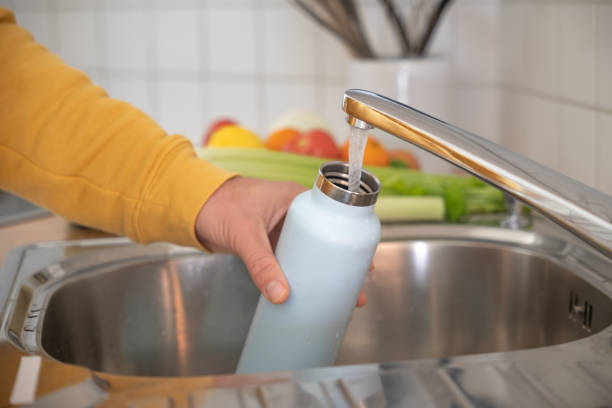N-Nitroso-di-n-butylamine

N-Nitroso-di-n-butylamine is a clear yellow, oily liquid. Safe Home offers a few kits that provide drinking water testing for N-Nitroso-di-n-butylamine in city and well water supplies.
Parameter Type: Drinking Water Testing for Volatiles
Parameter Name: N-Nitroso-di-n-butylamine
What it is and Where it Comes From:
N-Nitroso-di-n-butylamine is a clear yellow, oily liquid. It is used as a research chemical. N-Nitrosodiethanolamine is ubiquitously found in the environment and is a contaminant formed by the reaction of nitrites with ethanolamines in a wide range of products including tobacco, pesticides, antifreeze and personal care products. This substance is only used for research purposes to induce tumors in experimental animals. N-Nitrosodiethanolamine is reasonably anticipated to be a human carcinogen. is not produced commercially; however, its formation as a waste product at rubber manufacturing plants and in factories that use metal working fluids may result in its release to the environment through various waste streams. N-Nitrosodiethanolamineis not expected to volatilize from dry soil surfaces based upon its vapor pressure. N-Nitrosodiethanolamineis not expected to biodegrade in soil or water based on anaerobic studies where the lack of biodegradation was attributed to the high hydrophobicity, low bioavailability and steric hindrance resulting from the long chain, bulky alkyl groups present. If released into water, N-Nitrosodiethanolamine is expected to adsorb to suspended solids and sediment based upon the estimated Koc. Volatilization from water surfaces is expected based upon this compound’s Henry’s Law constant. Estimated volatilization half-lives for a model river and model lake are 4 and 30 days, respectively. Drinking water testing gives you several benefits like peace of mind, identifying contaminants in your water, and insight into health concerns. Safe Home offers Laboratory drinking water testing kits for N-Nitroso-di-n-butylamine, allowing you to collect your water sample and ship it directly to our EPA-Certified Laboratory. This platform of drinking water testing for N-Nitroso-di-n-butylamine will give you an accurate level based on the lowest level of a parameter our instruments can detect (Method Detection Level). Safe Home drinking water testing for volatiles can be used for city and well water supplies. Drinking water testing should be done any time you notice a significant change in your water quality.
Health Effects:
There is some evidence showing N-Nitrosodiethanolamine causes bladder, liver, and lung cancer in animals. N-Nitrosodiethanolamine may damage the liver, kidneys, and developing fetus.
Solutions to Contaminant Levels:
What are the next steps after drinking water testing? A filter with granular activated carbon (GAC) is a proven option to remove certain chemicals, particularly organic chemicals, from water. GAC filters can be used to remove chemicals that give objectionable odors or tastes to water such as hydrogen sulfide (rotten eggs odor) or chlorine. Reverse osmosis is a process that removes foreign contaminants, solid substances, large molecules, and minerals from water by using pressure to push it through specialized membranes. Here’s how reverse osmosis works. Unlike osmosis, which is a passive process, reverse osmosis requires external force (pressure) to work. Pressure is applied to a highly concentrated solute solution, such as salt water, to pass through a membrane to a lower concentrate solution. The membrane allows water to flow through but blocks out larger molecules, like contaminants. The reverse osmosis process leaves higher concentrations of solute on one side and only the solvent, or freshwater, on the other. Who do I need to contact to find out more information about water quality in my area? Every community water supplier must provide an annual report to its customers, known as a Consumer Confidence Report (CCR). The report provides information on your local drinking water quality, including the water’s source, contaminants found in the water, and how consumers can get involved in protecting drinking water. How often does the local public water system preform drinking water testing? Frequency of drinking water testing depends on the number of people served, the type of water source, and types of contaminants. Certain contaminants are tested more frequently than others, as established by the Safe Drinking Water Act. You can find out about levels of regulated contaminants in your treated water for the previous calendar year in your annual Consumer Confidence Report (CCR).


